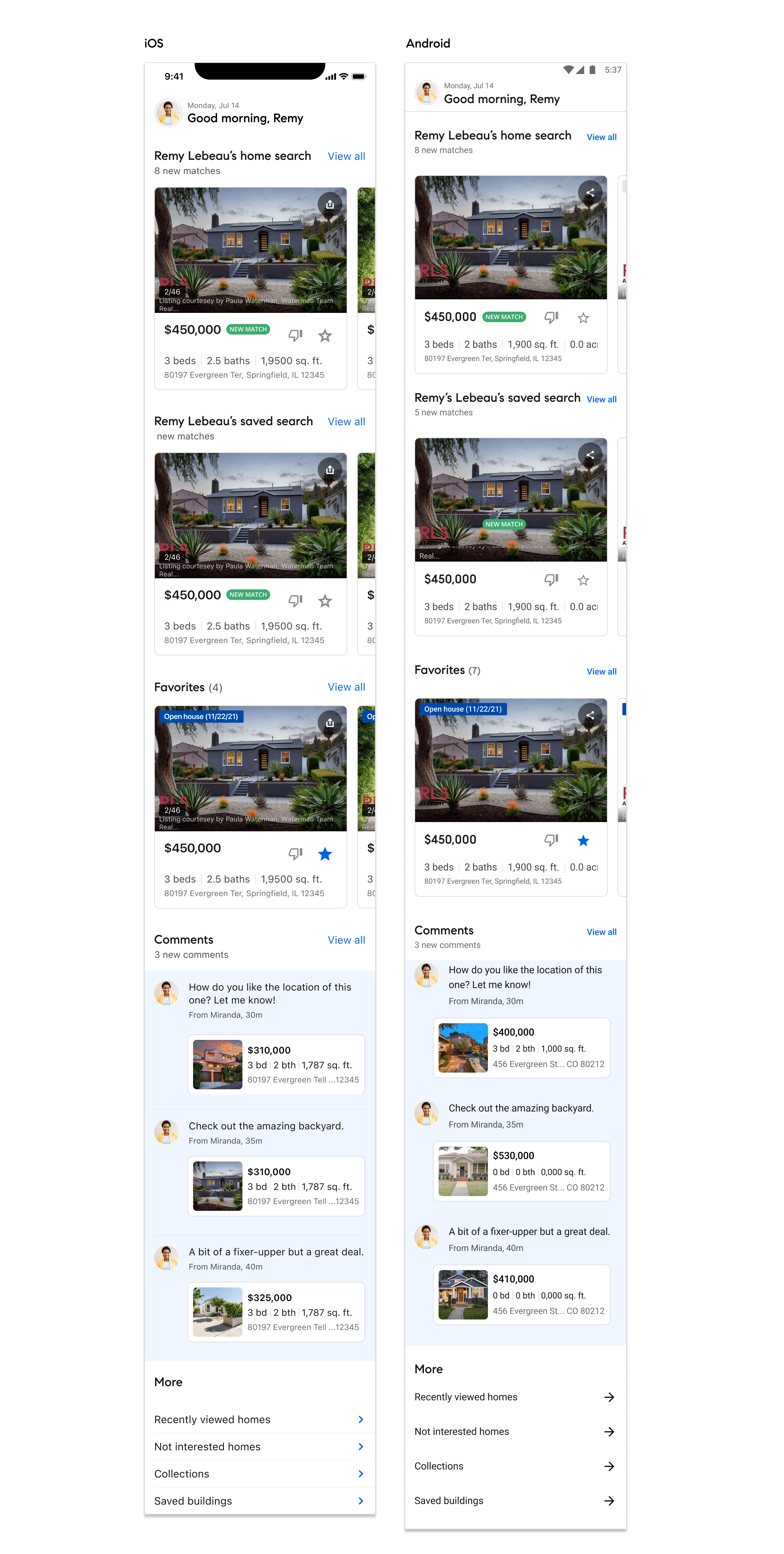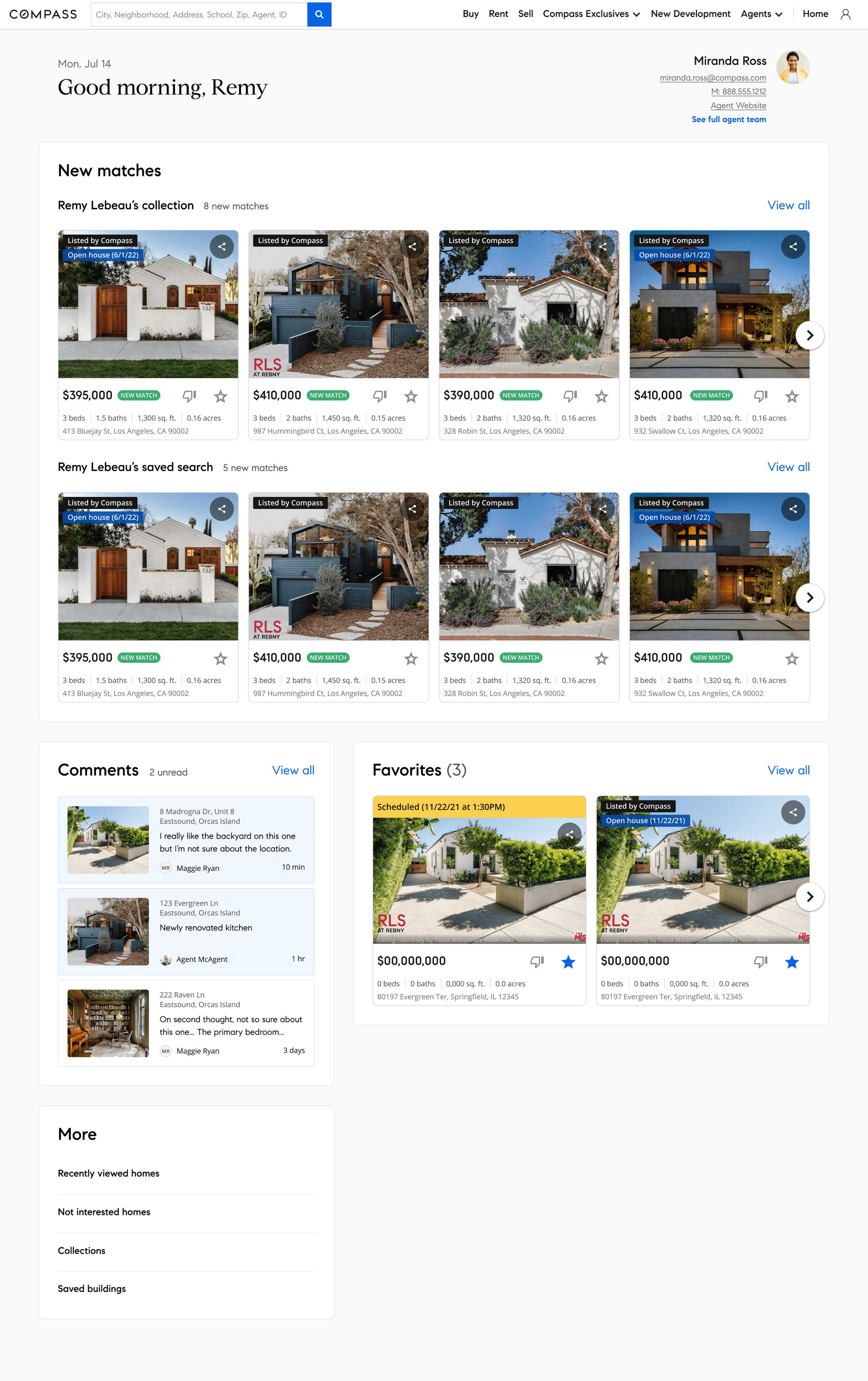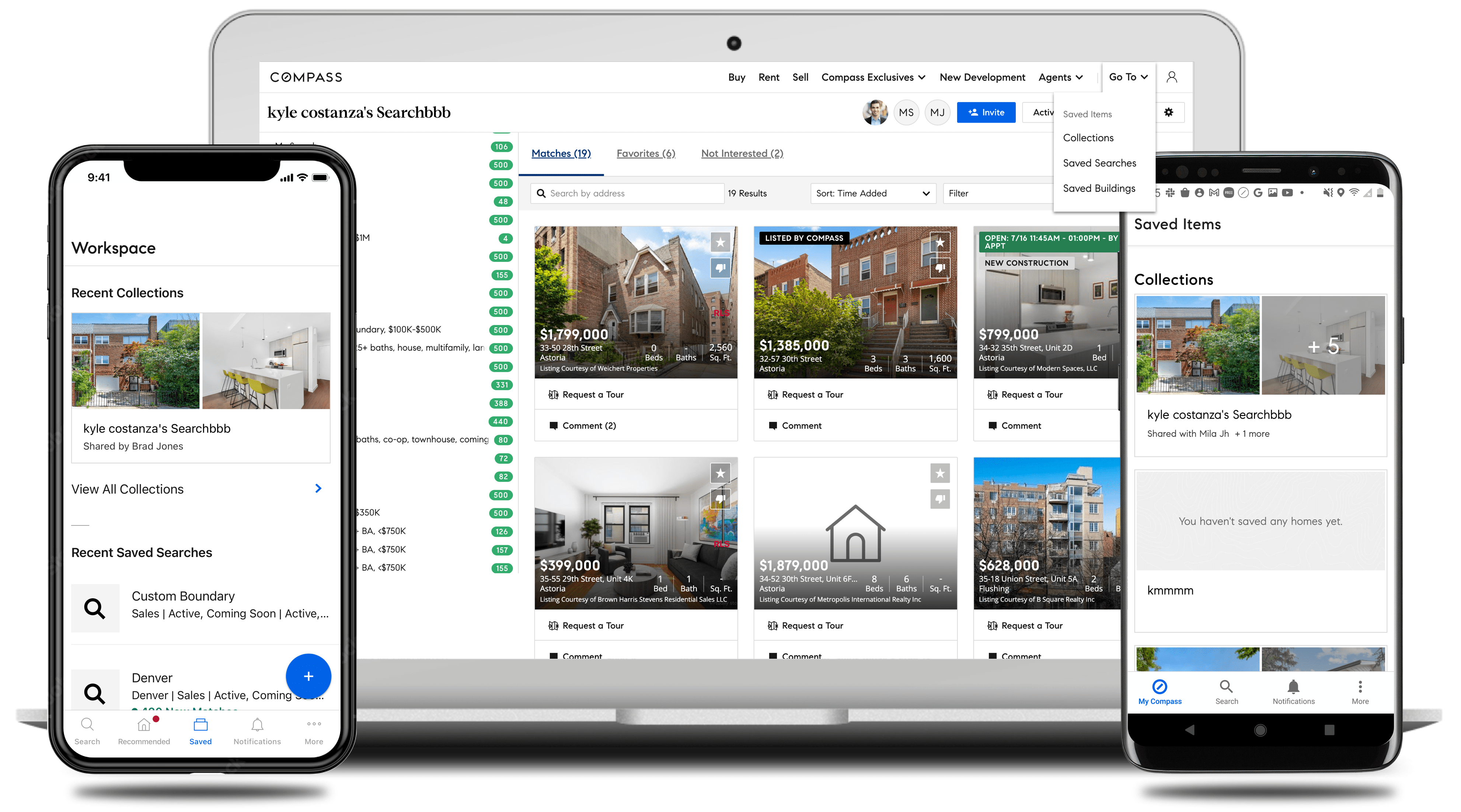
A place where clients and agents can work more collaboratively together through the home buying process.

The Client Home, aka Home, was broken up into a three-phase approach that spans the needs of other development teams and stakeholders across Compass. The case study below is presented from the lens of the team I supported, the buy-side team, and the output created for phase 1 of the Client Home. The buy-side team is the first and only team to deploy for phase 1 due to the business needs, market demand, and scope of work negotiated. Our team is creating the foundation to which other teams will leverage in future iterations of the Client Home.
Currently on Compass, there are several types of products that both a client and agent can create. "Collections" is to name one, and "Saved Search" is to name the other. Both have their own capabilities and are independent of one another. However, depending on who creates the collection or saved search will also determine the set of capabilities associated with it. This model does not allow for seamless collaboration between agent, client, and technology.
For example, a collection created by an agent and shared with a client will show all collaborative actions like marking a listing as a favorite or not interested, commenting on a listing, sharing a listing, and requesting a tour. If a client were to engage with one of those actions the agent would be notified.
However, if a client creates a saved search or a collection. There is only a single action that can be taken, favorite a listing. Moreover, that engagement is not shared with your agent due to a lack of visibility on client created materials. The confusion between the experiences have been documented by the research department at Compass and this is just one example of the gaps the buy-side team is solving for with the Client Home.
After the initial kick-off meeting, the first design artifact produced was a competitive analysis. Or what Compass likes to call, LFR. Learn. From. Reality. The research provided a landscape for buy-side team members to better understand how direct and indirect competitors executed similar experiences. The full list is seen here: Redfin, Zillow, Realator.com, StreetEasy, Opendoor, Homesnap, Trullia, Real scout, Home Depot, Disney & Airbnb
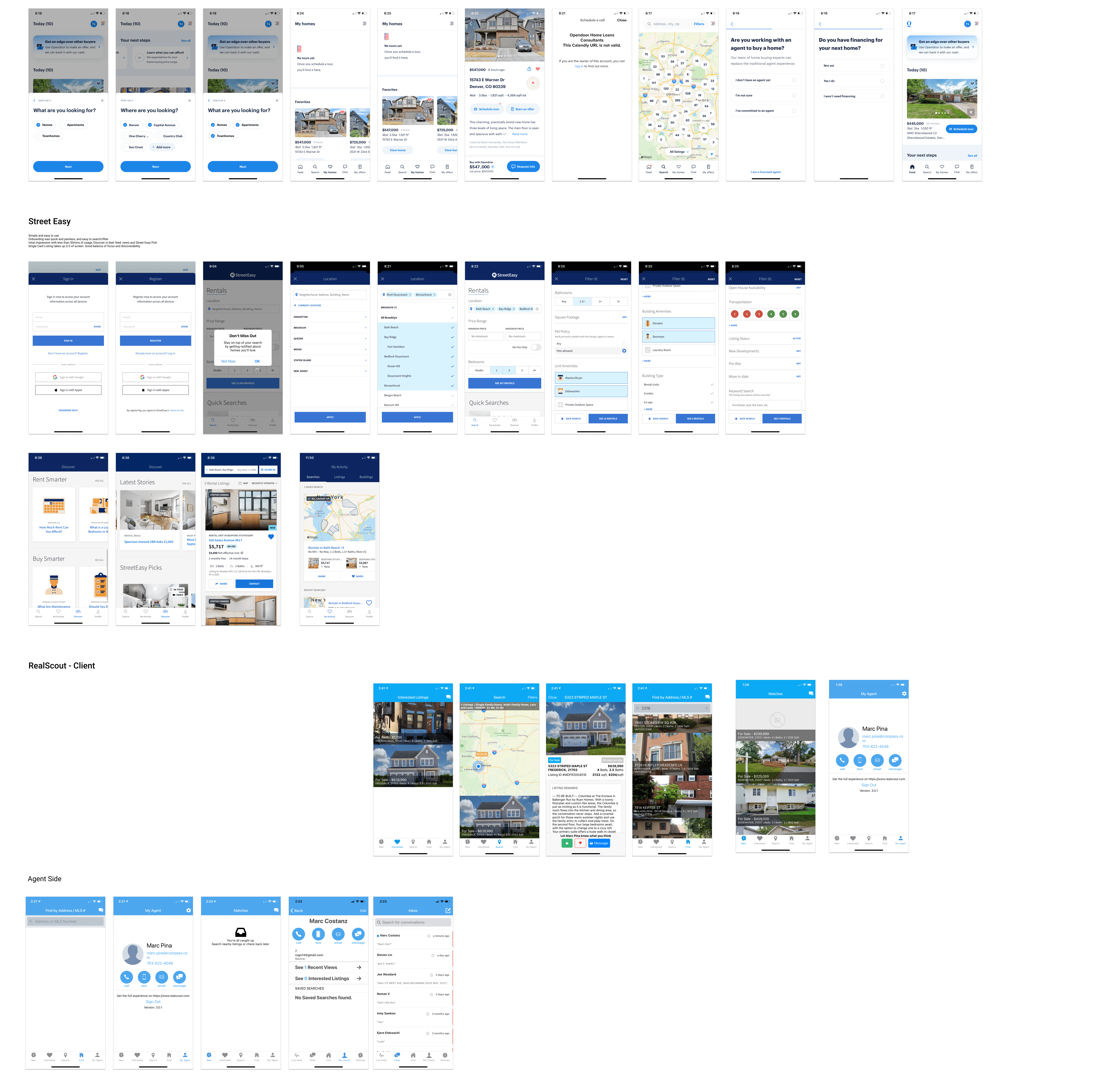

Leveraging previous research with current, the buy-side team held a design session to update “Jobs to be Done” artifact which led into the prioritization and strategy behind what the Client Home would be.
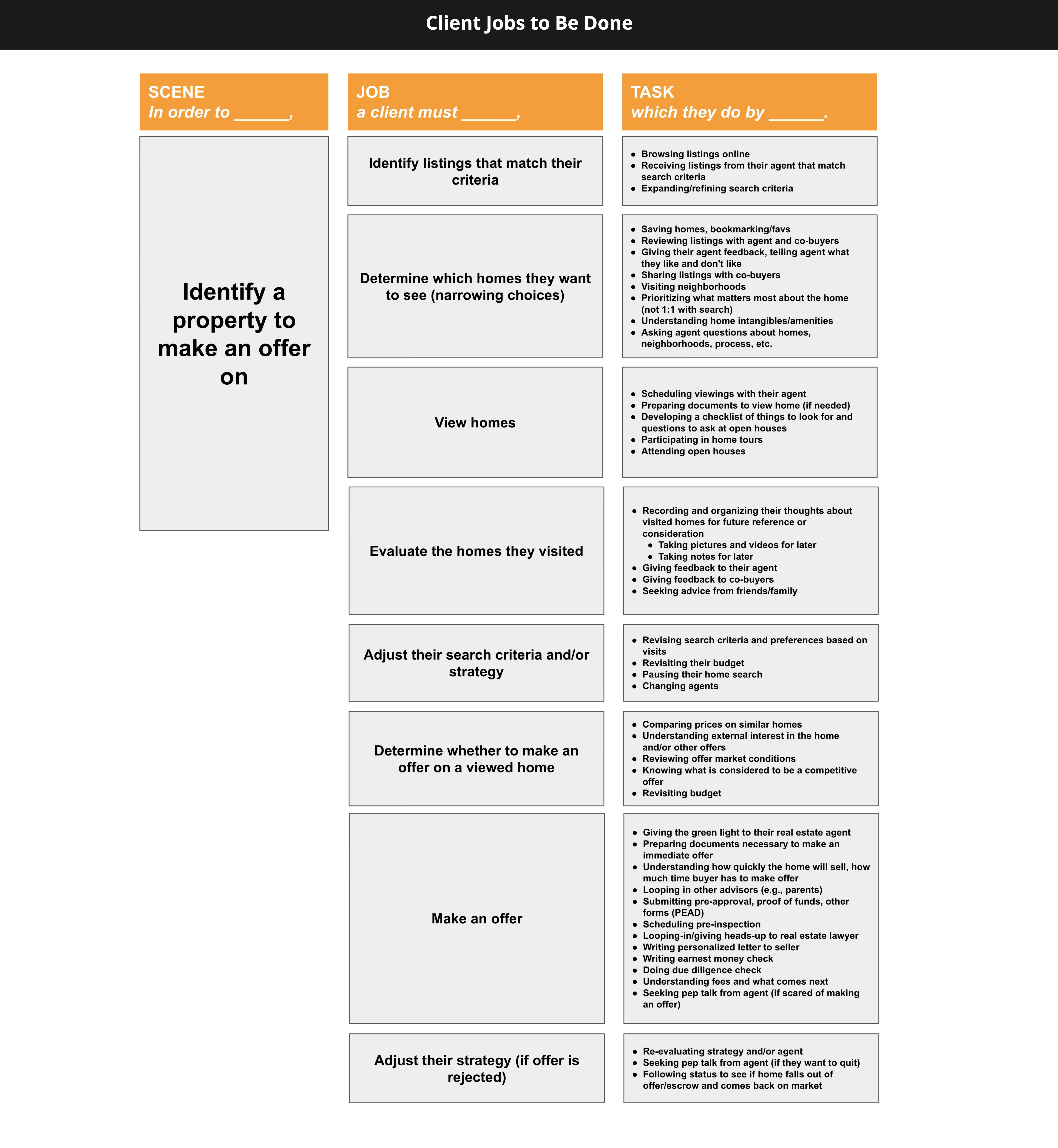

When the competitive research was complete, the buy-side team held a half-day design session. The goal of the design session was to breakdown how direct and indirect competitors were creating these experiences and how might Compass build similar products that were elevated. Two products Compass was looking to push forward and learn from a design and research perspective was the Client Home and Listing Feed. One of the goals from the design session was to have a clear perspective of how these two products would function with one another and how might they be integrated into our existing platforms that would make sense from a client and agent viewpoint.
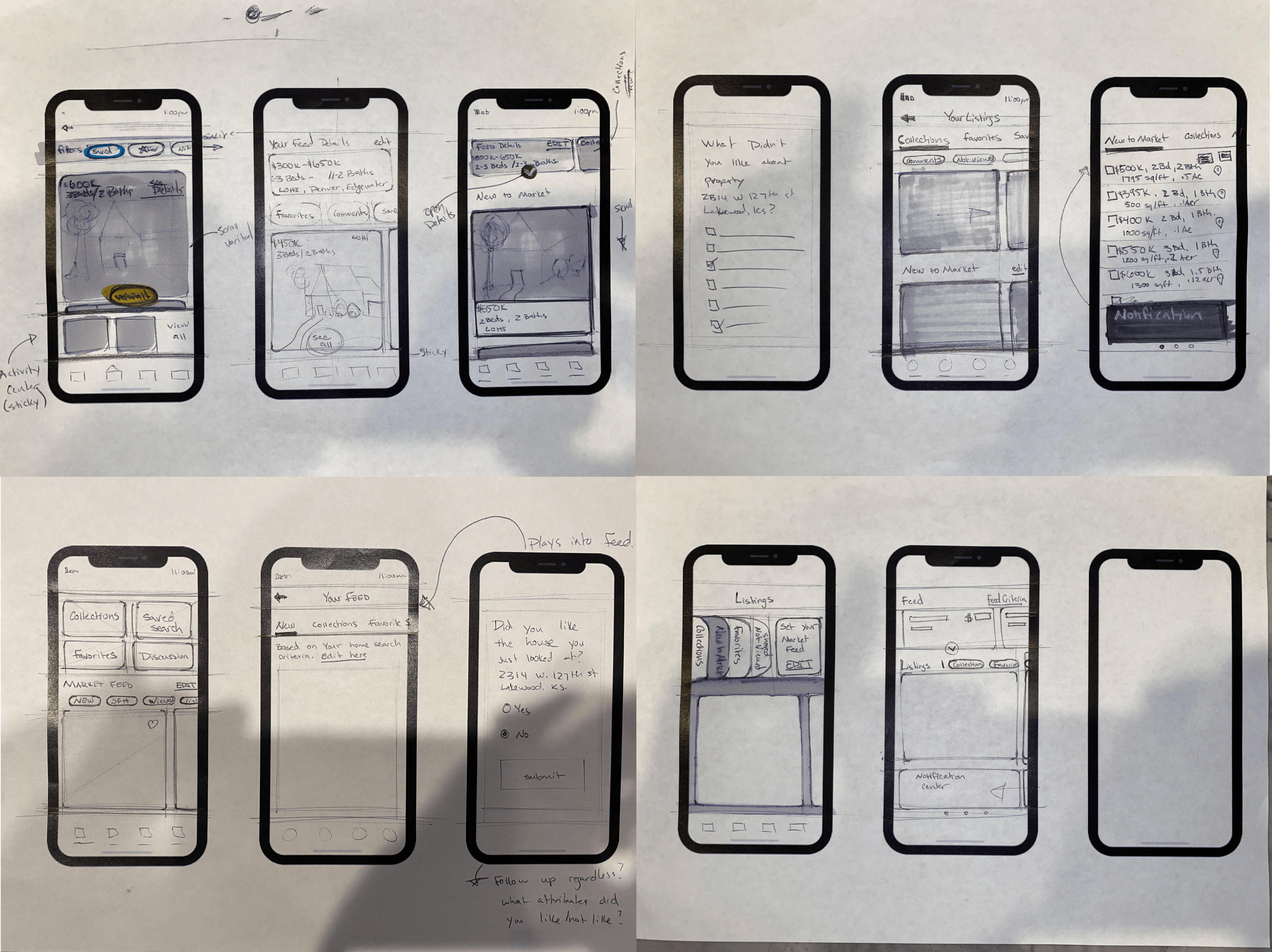
When the competitive research was complete, the buy-side team held a half-day design session. The goal of the design session was to breakdown how direct and indirect competitors were creating these experiences and how might Compass build similar products that were elevated. Two products Compass was looking to push forward and learn from a design and research perspective was the Client Home and Listing Feed. One of the goals from the design session was to have a clear perspective of how these two products would function with one another and how might they be integrated into our existing platforms that would make sense from a client and agent viewpoint.
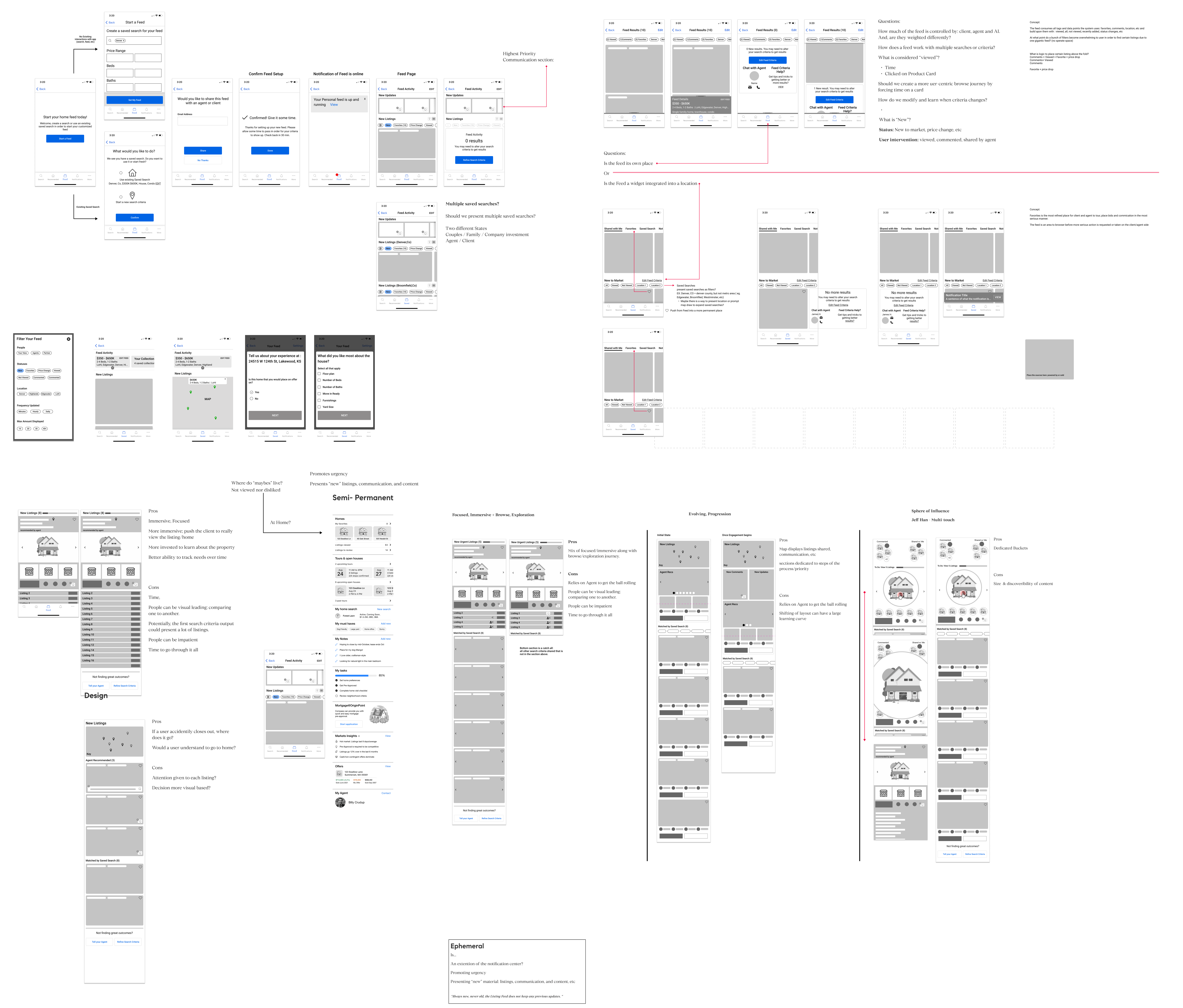
In the first round of testing, the Client Home and feed were visibly separate products; each had their own place within the navigation. The hypothesis was that these products had their separate work streams, finding it easier to manage their home search activities.

Jared, from our research team, conducted a moderated, mobile app test, with 8 participants on usertesting.com. The first round of testing takeaways can be seen below.
After the first round of testing was complete, the buy-side team knew that client home and feed as separate products and work streams on the navbar would not be optimal for our client base.
As I get further into the buy-side client home and feed concepts, I begin to familiarize myself with other teams and stakeholder needs. The cross-functional team collaboration helped to highlight questions and shortcomings of what Client Home could be.
The images below illustrates some of the strategic design conversations that the buy-side identified that need understanding from cross-functional teams on how they will execute their products into the client home. Some of the concerns are: how will client home scale in the current IA and with other teams products and services coming post M0 launch, the current IA is lacking alignment based on user feedback and needs realignment across the organization, scenarios regarding multiple transactions; what does an agent get to see and how that might affect data and multiple transactions.
The IA on the app needs to alignment with all cross-functional stakeholders. The current agreement for M0 deployment, the internal name for the first client home mvp, is the buy-side team will take over the current “Home” nav item for the new client home. All other nav items will stay the same. Duplication of content in the “Saved” nav item become useless and potentially a pain point for users.

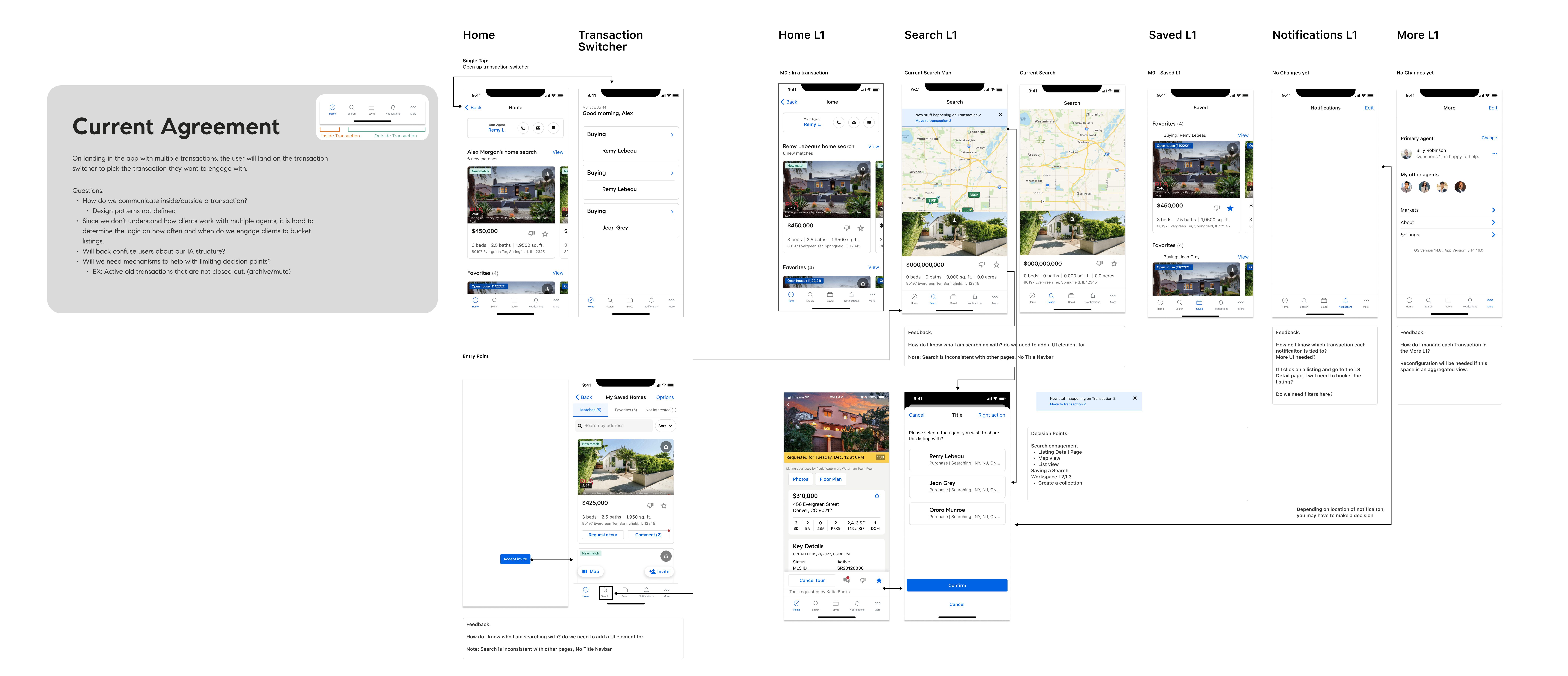
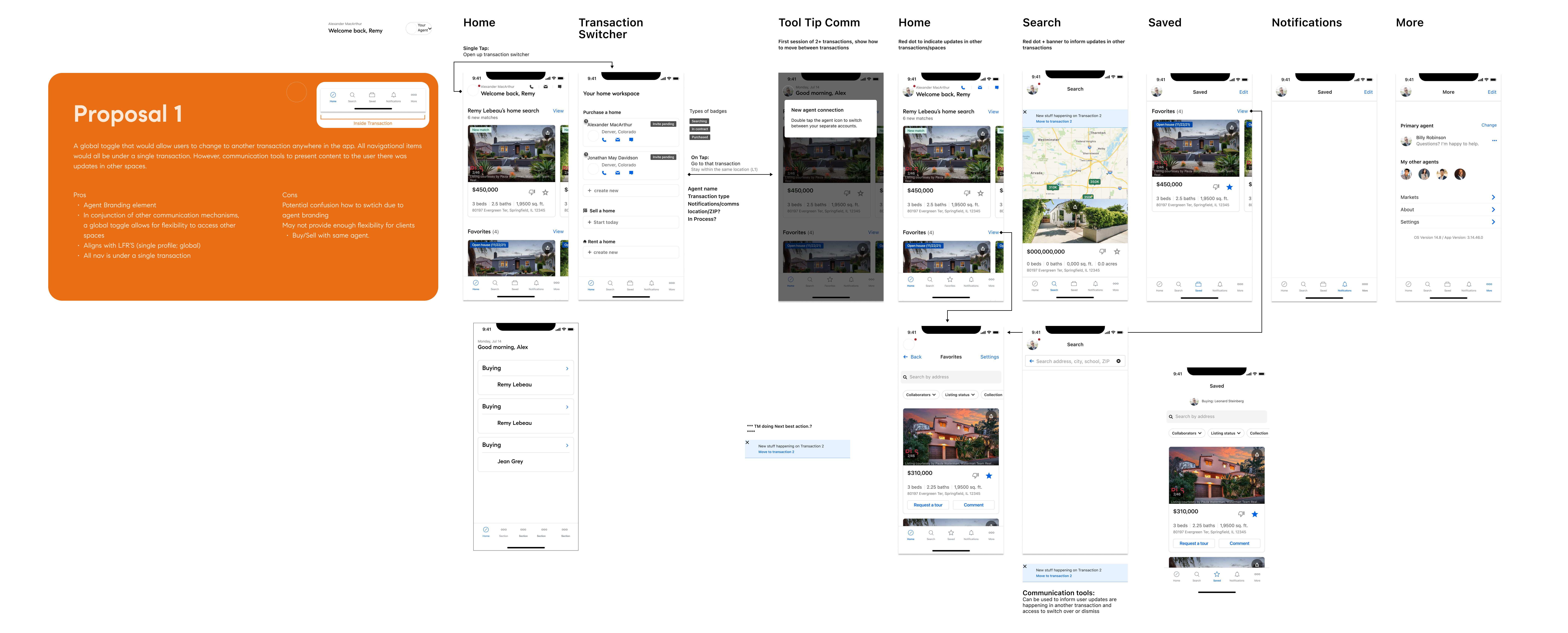


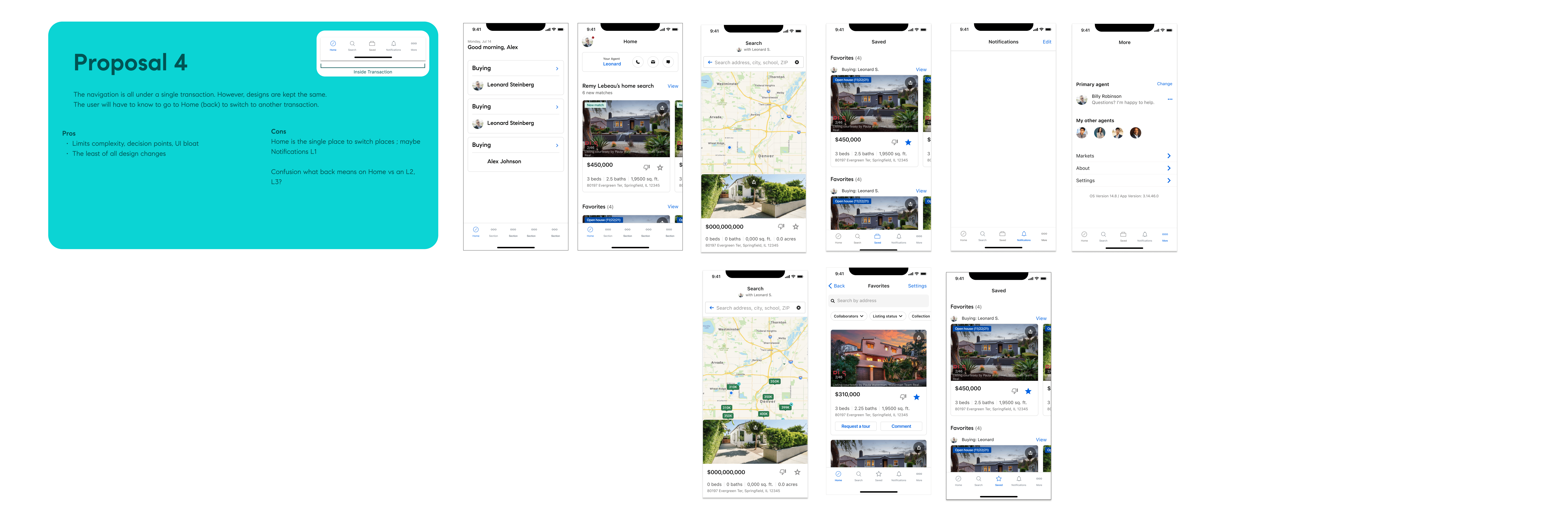
After the initial round of testing that surfaced great user feedback along with stakeholder input, Client Home has become an all-inclusive task-oriented atmosphere. The image below is the iteration from the previous tested design.
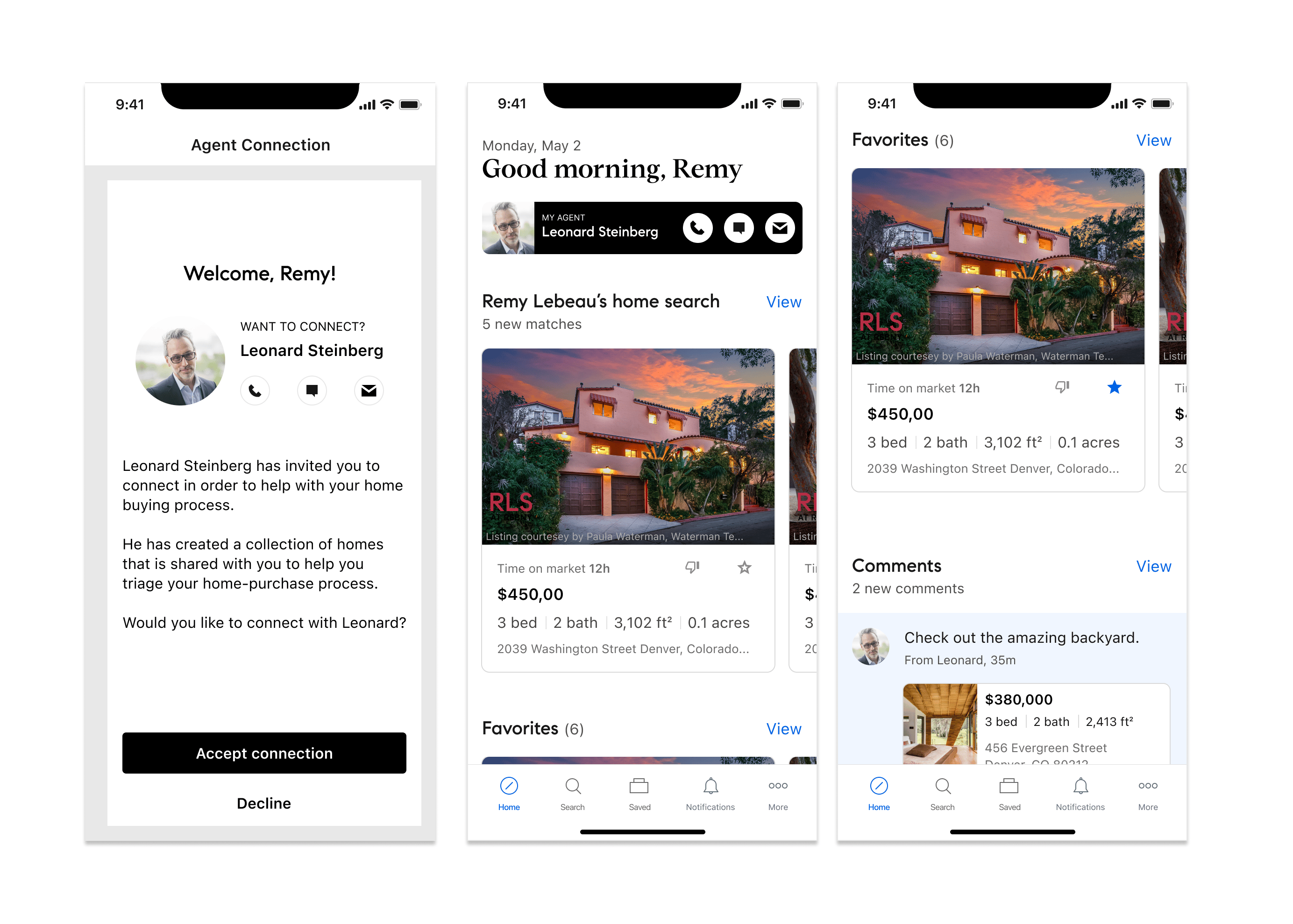
Jared, from our research team, conducted a moderated, mobile app test, with 8 participants on usertesting.com. The second round of testing takeaways can be seen below.
I brought up a concern in Compass’s current agent onboarding process that would promote a dark pattern if no solution was in place for Milestone 0. In the current process, an agent sends out an email for the potential client to accept so they can begin working together in a single collaborative space. The concern comes into play when a client is already in the app prior to their relationship or bypasses the email and downloads the app with the email address tied to the agent invite email. The current system does not take these scenarios into account nor when a client has a previous purchase through Compass or multiple active client/agent relationships.
My goal for our current and future clients is to be upfront and honest, while not making assumptions about their needs. Just because an email went out from an agent shouldn’t mean we auto-accept them into the Client Home space.
The flow diagram presents the scenarios mentions above and depicts how and when a client enters a collaborative client/agent home search process.
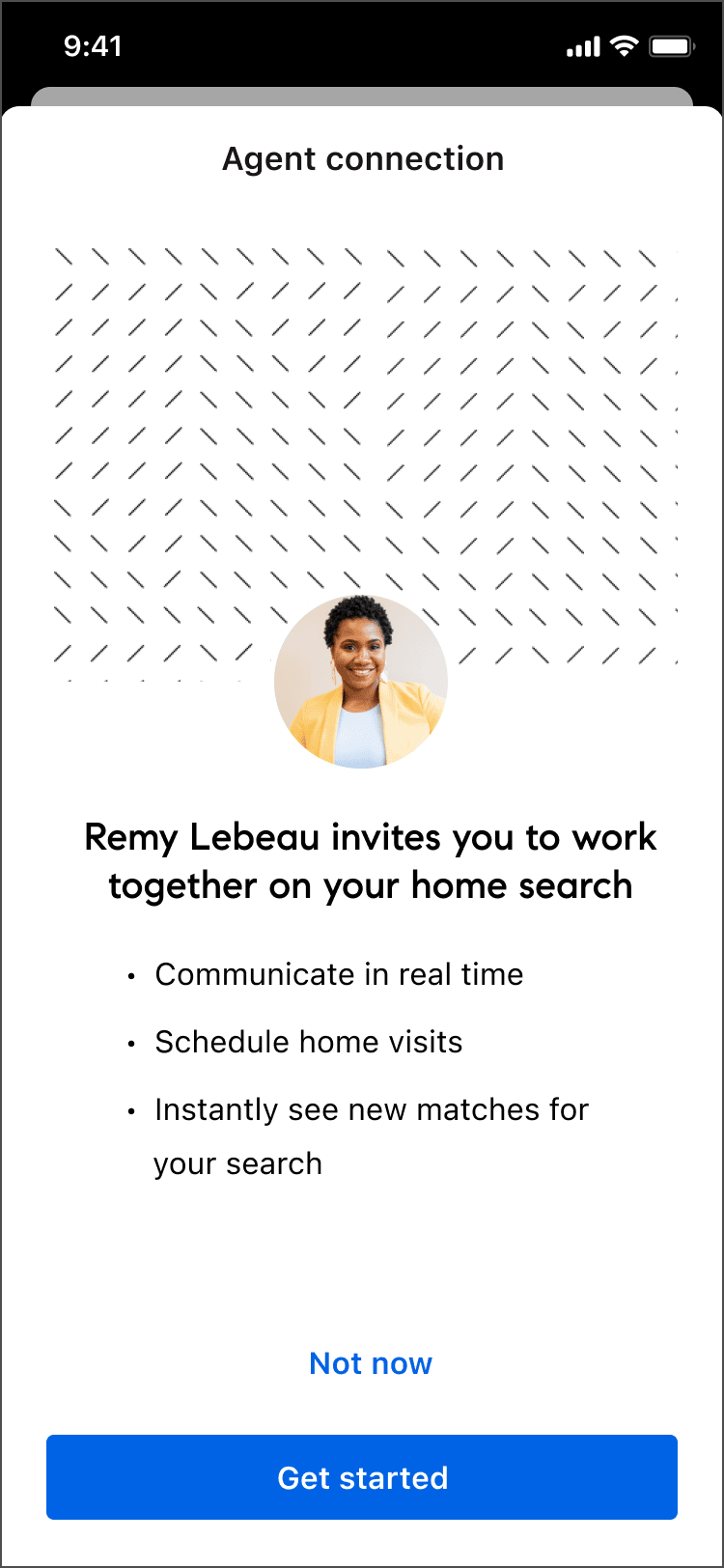
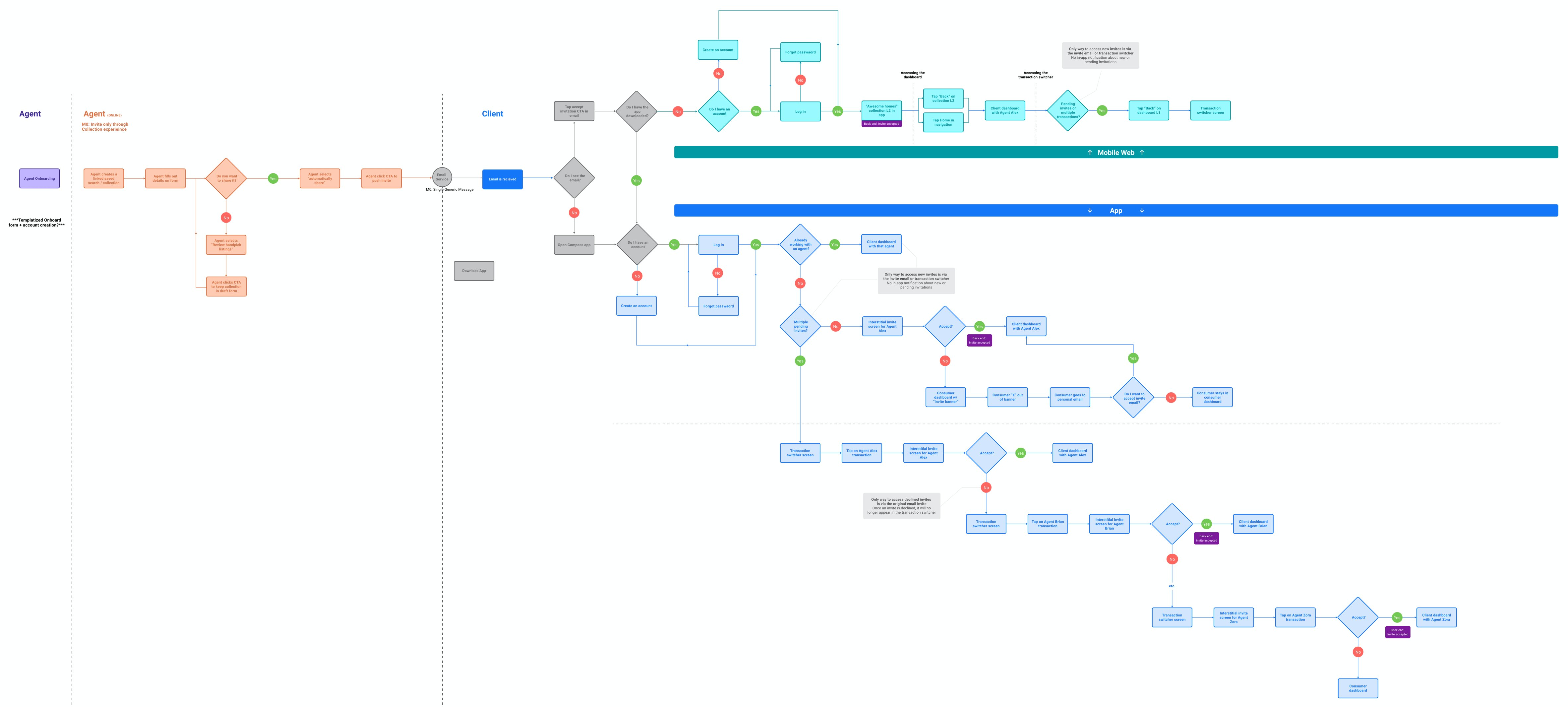
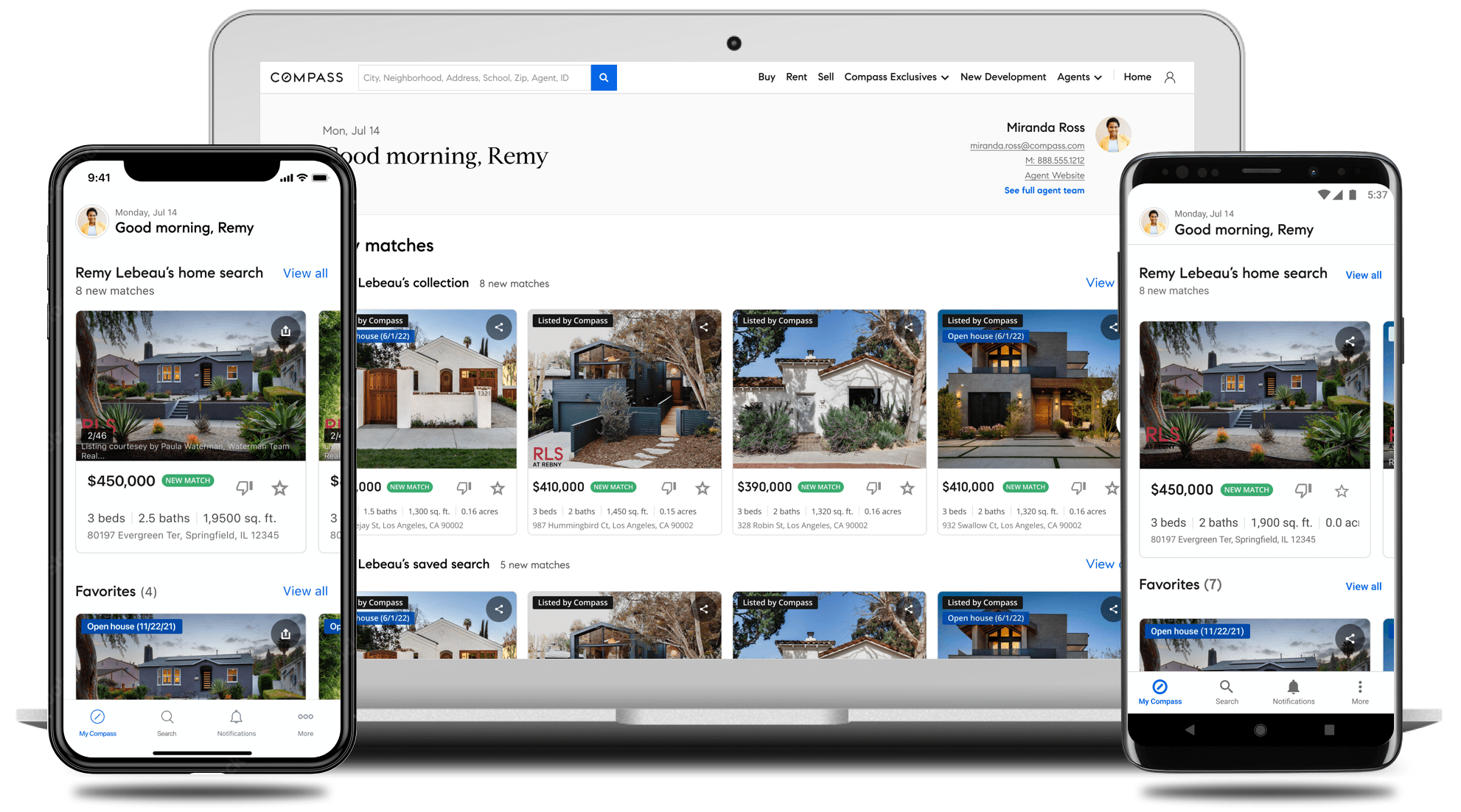
The goal of creating a space where clients and agents can easily collaborate, stay aligned, and find their dream home is one step closer with the Client Home phase one implementation. You can reference the images below of what I created for the buy-side Client Home journey.
Another project that I worked on and is directly tied to the Client Home is the Listing Feed. Please go to this project and see the iteration of the buy-side improvements for the Client Home phase three.
